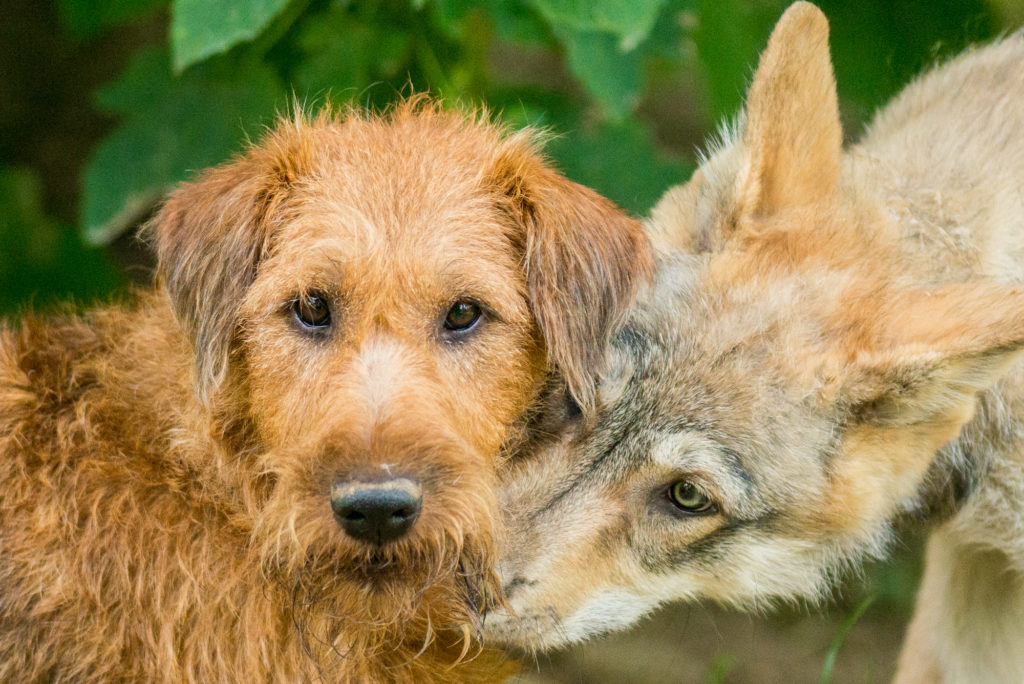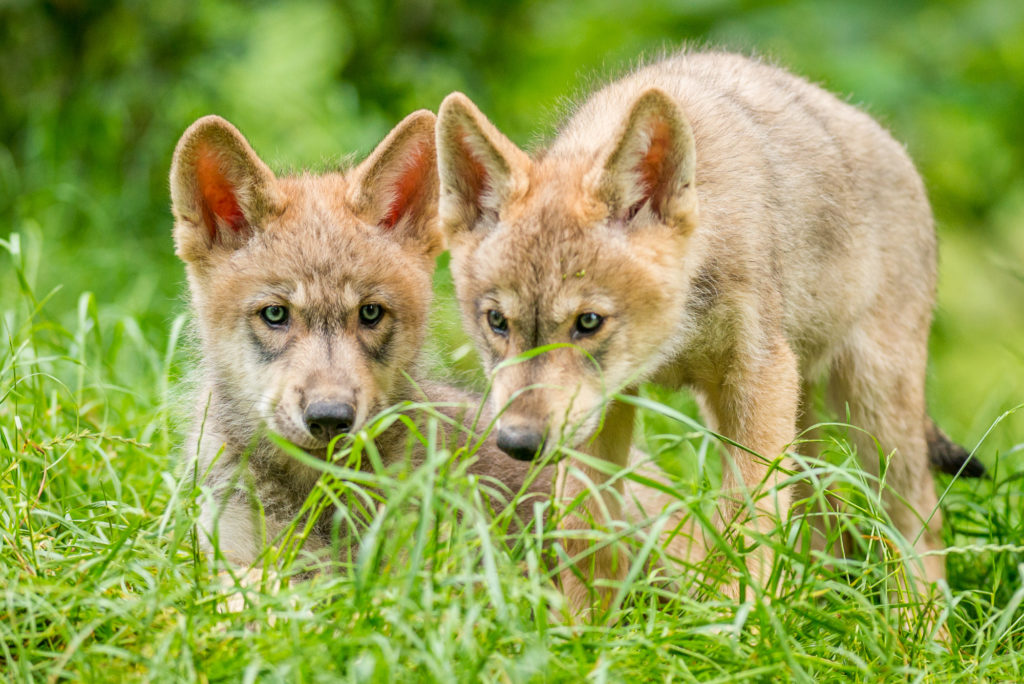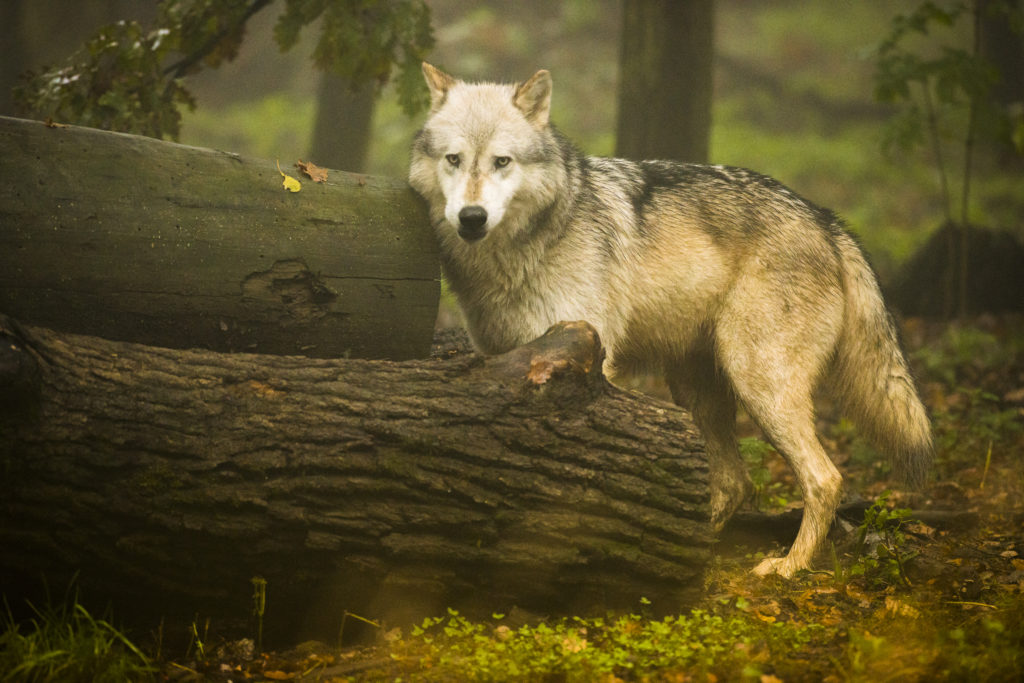Selected coverage: Science Magazine, Independent, Christian Science Monitor
Wolves pursue a high-risk, all-or-nothing strategy when gambling for food, while dogs are more cautious, shows a new study. This difference is likely innate and adaptive, reflecting the hunter versus scavenger lifestyle of wolves and dogs.
Would you rather get 100 euros for certain, or have a fifty-fifty chance of receiving either 200 euros or nothing? Most choose the first, as humans tend to be “risk-averse”, preferring a guaranteed pay-off over the possibility of a greater reward. It is thought that this human preference for “playing it safe” has evolved through natural selection: when you live precariously like our remote ancestors, losing all your food reserves might be catastrophic, while adding to them might makes less difference to your chances of survival.
Here, in one of the first studies on risk preferences in non-primates, scientists show through a series of controlled experiments that wolves are consistently more prone to take risks when gambling for food than dogs. When faced with the choice between an insipid food pellet and a fifty-fifty chance of either tasty meat or an inedible stone, wolves nearly always prefer the risky option, whereas dogs are more cautious.
“We compared the propensity to take risks in a foraging context between wolves and dogs that had been raised under the same conditions,” says Sarah Marshall-Pescini, a postdoctoral fellow at the University of Vienna and the Wolf Science Centre, Ernstbrunn, Austria, the study’s first author. “We found that wolves prefer the risky option significantly more often than dogs. This difference, which seems to be innate, is consistent with the hypothesis that risk preference evolves as a function of ecology.”
The study was done at the Wolf Science Centre, Ernstbrunn, Austria, a research institute where scientists study cognitive and behavioral differences and similarities between wolves and dogs. Here, wolves and dogs live in packs, under near-natural conditions within large enclosures.
Marshall-Pescini let each of 7 wolves and 7 dogs choose 80 times between two upside-down bowls, placed side-by-side on a moveable table-top. The animals had been trained to indicate the bowl of their choice with their paw or muzzle, after which they would receive the item that was hidden beneath it.
The researchers had taught the wolves and dogs that beneath the first bowl, the “safe” option, was invariably an insipid dry food pellet, while beneath the second bowl, the “risky” option, was either an inedible item, a stone, in a random 50% of trials, and high-quality food, such as meat, sausage, or chicken, in the other 50%. The side for the “safe” and “risky” option changed between trials, but the animals were always shown which side corresponded to which option; whether they would get a stone or high-quality food if they chose the “risky” option was the only unknown. Rigorously designed control trials confirmed that the animals understood this rule, including the element of chance.
Wolves are much more prone to take risks than dogs, show the results. Wolves chose the risky option in 80% of trials, whereas dogs only did so in 58% of trials.
The researchers believe that dogs evolved a more cautious temperament after they underwent an evolutionary shift from their ancestral hunter lifestyle to their current scavenger lifestyle, which happened between 18,000 to 32,000 years ago when humans first domesticated dogs from wolves. Previous research has suggested that species that rely on patchily distributed, uncertain food sources are generally more risk-prone. For example, chimpanzees, which feed on fruit trees and hunt for monkeys, have been shown to be more risk-prone than bonobos, which rely more on terrestrial vegetation, a temporally and spatially reliable food source.
“Wild wolves hunt large ungulates – a risky strategy, not only because hunts often fail, but also because these prey animals can be dangerous – whereas free-ranging dogs, which make up 80% of the world’s dog population, feed mostly by scavenging on human refuse, a ubiquitous, unlimited resource. So dogs no longer need to take risks when searching for food, and this may have selected for a preference to play it safe.” concludes Marshall-Pescini.


